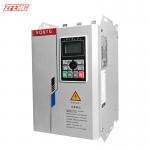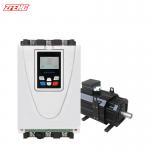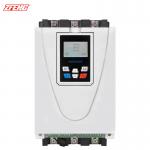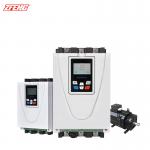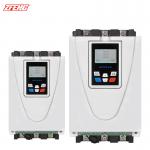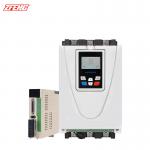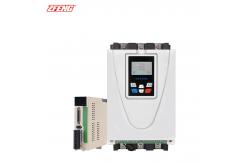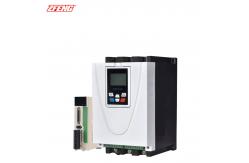ZF-R Series Current-Controlled Motor Soft StarterCurrent-Controlled Soft Start is a technology that achieves smooth motor starting by
limiting the starting current. Its core principle involves
regulating the input current of the motor through power electronic
devices (such as thyristors) to gradually increase it during the
starting process until it reaches the rated value. During startup,
the current is restricted within a preset limit to prevent
excessive current surges that could damage the power grid and
equipment. Once the motor reaches its rated speed, the soft starter
automatically replaces the thyristors (which have completed their
task) with a bypass contactor, providing the motor with the rated
voltage for normal operation.
Features and Advantages- Low Inrush Current: By limiting the starting current, it effectively reduces the
current surge during startup, protecting the power grid and
equipment.
- Smooth Torque Rise: During the starting process, the torque increases smoothly,
protecting the transmission machinery, equipment, and personnel.
- Stepless Regulation: Current-controlled soft starters employ power semiconductor
switches to achieve stepless regulation, enabling continuous and
stable motor starting.
- Protection Functions: Equipped with multiple protection features such as overcurrent
protection, overload protection, and phase loss protection, it
enhances system reliability and safety.
Application ScenariosCurrent-controlled soft starters are widely used in applications
where starting current needs to be limited, such as: - Industrial Production: Used in automated production lines, large fans, pumps, and other
equipment to reduce mechanical and electrical shock during startup.
- Building Equipment: Such as elevators and air conditioning systems, to reduce startup
noise and extend equipment lifespan.
- Power Systems: Applied in substations and distribution lines to enhance power
system stability.
- Transportation Facilities: In motor startups for subways, light rail, and other
transportation facilities to reduce grid impact.
Technical Implementation- Thyristor Control: Utilizes thyristor phase control technology to regulate the
motor's input voltage, achieving precise current control by
adjusting the thyristor's conduction angle.
- Intelligent Control Algorithms: Employs advanced control algorithms to freely and steplessly
adjust to the optimal starting current based on load conditions and
grid relay protection characteristics.
- Microcomputer Control and Fault Diagnosis: Conducts pre-startup fault diagnosis on the main circuit to
improve system reliability.
Advantages- Reduces current surge during startup, protecting circuit
components.
- Lowers starting current to prevent startup overcurrent tripping.
- Can incorporate current closed-loop control to ensure smooth motor
startup.
|
